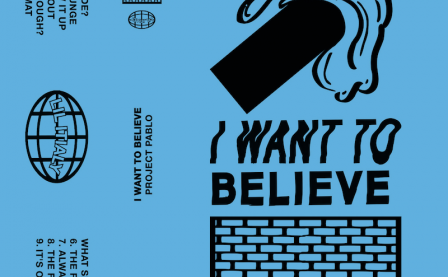Project Pablo, a Vancouver native currently living in Montreal, just released I Want To Believe on 1080p. At first glance, the album title doesn’t seem to have anything to do with Fox Mulder, Dana Scully, UFOs, or The X-Files. It’s Canadian house, something I didn’t know existed before. But I’ll take it, along with my preferred versions: Berlin and Chicago. The grooves are deep, with that little bit of warm, compressed fuzz on each track, reminding me of the disco my father would play in New York back in the 90s. There’s some Chicago DNA in this release, but it’s not saturated with it, only influenced, structurally, here and there. (It certainly gives the ordinary appearance that it’s just another house release.) But like all 1080p releases, there’s a bit of genre-hopping and unclassification. Call it Canadian house, sure, but that’s not getting at it directly or indicating the direction this release is actually taking.
Richard MacFarlane, the man behind 1080p, seems to enjoy releasing music that participates in genre-hybridity. Each release wields a world of electronic tropes charged with promise and anticipated cues, totally absorbed in their sense of growth and progression toward a fixed end, but still remaining flexible with their facades and their artificial sceneries. These tropes are everywhere, spilled out of cities, TV shows, and fashion statements. Just as matter cannot be added or subtracted from the universe, so these tropes exist: the groove, the club, the dance floor, the Casio, the Roland, the drum machine, the drugs, the Nike sweatshirt, the UFO, the bedroom, the cassette player, the VHS tape, the mixtape, the warehouse, the penthouse, the loft, the sampler, the urban decay, the murder mystery, the vinyl fuzz, the video game, the motorcycle, the saxophone, the stonewashed jeans, the Yamaha, the Korg, the jog. 1080p proves that electronic music is a dreamy internet of objects. A thin veil covers the music with the exoticism of a thronged city.
There is room to move around in this. You can dance to it; you can put it on while a polar vortex beckons you into its icy intimacy; you can listen to it on a street on the other side of the city with friends; you can put it on as you run through the park, dodging dogs, strollers, pinecones, and poop. The 90s vibes that are associated have the unearthly weirdness of an old photograph. There’s nothing protecting the business-as-usual attitude of house music with this release. And so it goes. With I Want To Believe, we experience its energy and beauty as internet detectives, historically absent from its origin but still convinced that the past is still here, and that electronic music is an entangled series of events. It is. That’s the direction this release is taking: by being real about house and also plastic about it, concomitantly.
More about: Project Pablo




